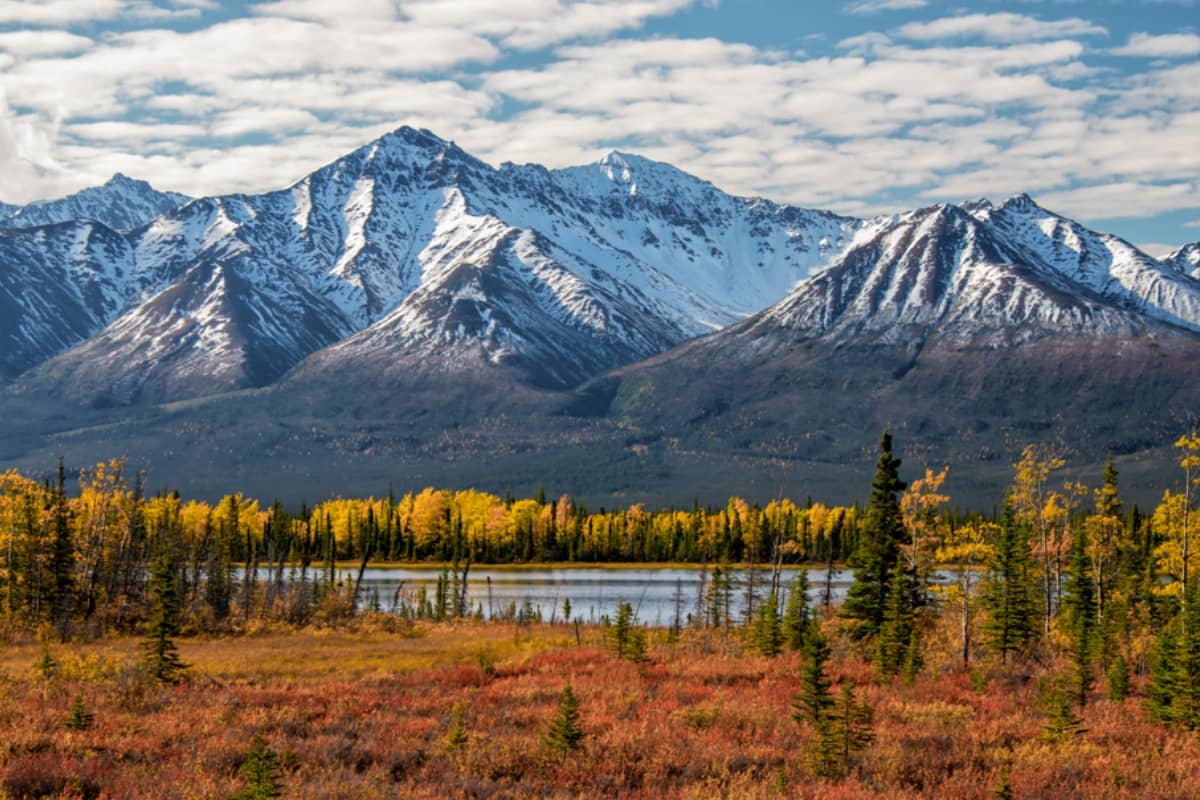Alaska in the autumn season offers breathtaking landscapes and unique experiences. However, the state’s wilderness can pose hidden dangers to unprepared tourists. Understanding the risks involved in autumn travel can help you have a safe and enjoyable experience in this remote region. Below, we explore six key dangers that tourists may encounter when visiting Alaska in the fall.
1. Unpredictable Weather Conditions
Alaska’s autumn weather can change drastically without warning. While the season can bring beautiful crisp days and spectacular fall foliage, it also signals the transition to winter. Temperatures can drop rapidly, particularly in the evenings, and the state can experience early snowfalls as early as September in some regions.
The unpredictable weather poses a significant danger to hikers and outdoor adventurers. Those unprepared for sudden storms or temperature changes might face hypothermia, especially if they get wet or don’t have appropriate clothing. Snowstorms can blow in suddenly and strand travelers in remote areas without easy access to shelter.
2. Wildlife Encounters
Autumn is a critical time for wildlife in Alaska as animals prepare for winter. Bears, in particular, are more active during this time as they fatten up before hibernation. Tourist hotspots, such as Denali National Park and Kenai Fjords National Park, are home to large populations of bears, and while bear encounters are rare, they can be dangerous when they happen.
Moose also pose a threat during the fall, as males can become aggressive during the rut (mating season). Moose injure more people in Alaska annually than bears, and encountering one unexpectedly on a hiking trail can be frightening and hazardous. Carrying bear spray and staying aware of surroundings is critical to preventing such dangerous encounters.
3. Shortened Daylight Hours
As autumn progresses, Alaska experiences a drastic reduction in daylight. In early September, there might still be 12 or more hours of daylight, but by October, daylight shrinks to around eight hours, and by November, much of the state plunges into near-constant darkness.
This reduced daylight can catch travelers off guard, leading to difficulties in navigating trails or returning from day trips. Without adequate light, the risk of injury from tripping, falling, or getting lost increases substantially. It’s essential to always have a reliable light source, like a flashlight or headlamp, and to plan excursions with enough time to return before dark.
4. Slippery Trails and Icy Roads
The combination of autumn rain, early snow, and freezing temperatures can make Alaska’s hiking trails and roads extremely slippery. Hiking trails that were accessible in the summer may become dangerous in the fall due to wet conditions or the formation of ice patches. Travelers hiking in more remote or higher elevation areas, such as the Flattop Mountain Trail or Denali’s backcountry, are particularly at risk. Injuries from falls on slick terrain are not uncommon.
In addition to the hiking risks, driving becomes hazardous as roads become icy, particularly in northern regions and mountain passes. Unpaved roads, which are common in Alaska, can be difficult to navigate when slick from rain or mud, and unprepared drivers can find themselves stuck or sliding. Snow tires or all-season tires with good traction are essential for safe driving in Alaska during the autumn months.
5. Isolation and Limited Emergency Services
Alaska is known for its vast wilderness and isolation, which are part of its charm, but also part of its danger. Many popular tourist areas in Alaska are far from medical facilities or emergency services, making it difficult to get help quickly if an accident occurs. Cell service can be unreliable in remote areas, and tourists should not depend on it in case of an emergency.
For those hiking or camping in remote areas, a GPS device or satellite phone is recommended. It’s also essential to leave travel plans with someone, detailing routes and expected return times. In the event of injury or getting lost, this information could be lifesaving.
6. Hypothermia and Cold Exposure
Even in early autumn, Alaska’s temperatures can drop to dangerously low levels, particularly at night. Hypothermia is a significant risk for anyone spending extended time outdoors without proper insulation and waterproof gear. Hypothermia occurs when the body loses heat faster than it can produce it, leading to a dangerously low body temperature.
Water-related activities, such as kayaking in Prince William Sound or glacier hiking, can be particularly dangerous in the fall. Getting wet in these freezing environments drastically increases the chances of developing hypothermia. Layered clothing, waterproof outerwear, and carrying extra dry clothes are crucial precautions to stay warm and safe.
Conclusion
Alaska’s wilderness offers a stunningly raw and beautiful experience during the autumn season, but tourists must remain vigilant and prepared to face the potential dangers. From unpredictable weather to wildlife encounters and isolation, Alaska presents challenges that demand respect and preparedness. Packing appropriate clothing and gear, staying aware of your surroundings, and taking steps to avoid isolation are essential strategies for mitigating risks. Understanding these hidden dangers will ensure that your trip to Alaska is both thrilling and safe.
Travelers planning to visit during the autumn months should also recognize that Alaska’s unique environment means access to emergency services can be limited, and risks like hypothermia, slippery roads, and aggressive wildlife encounters are heightened. By preparing accordingly and respecting Alaska’s raw power, tourists can safely explore the awe-inspiring landscapes and wildlife that make this state so unique.






